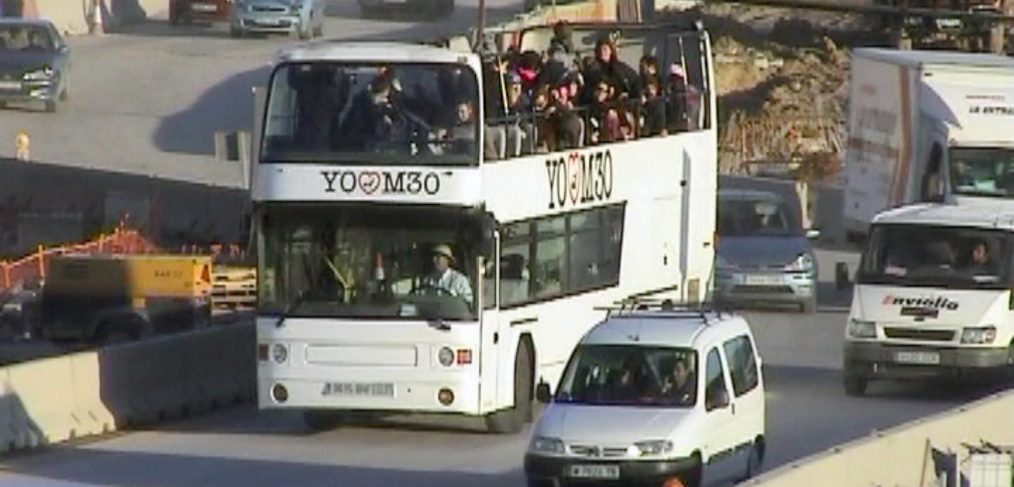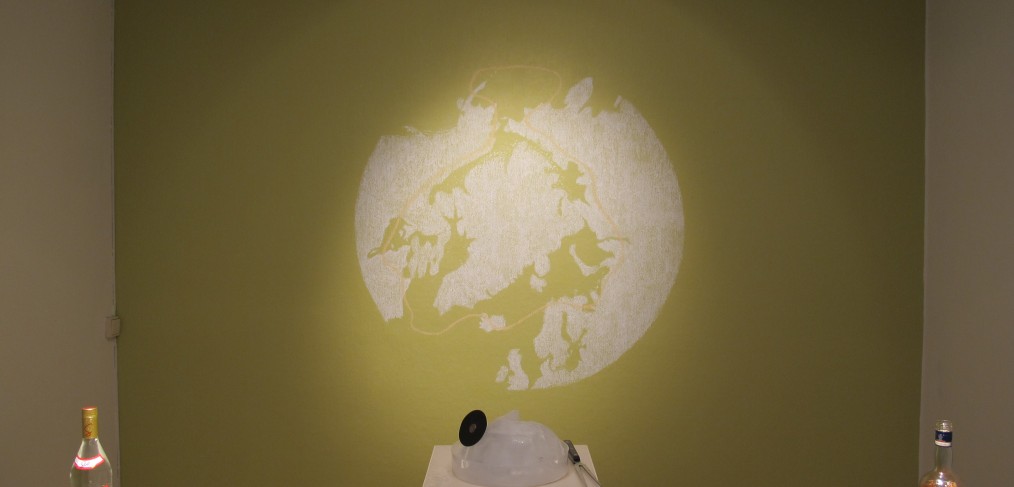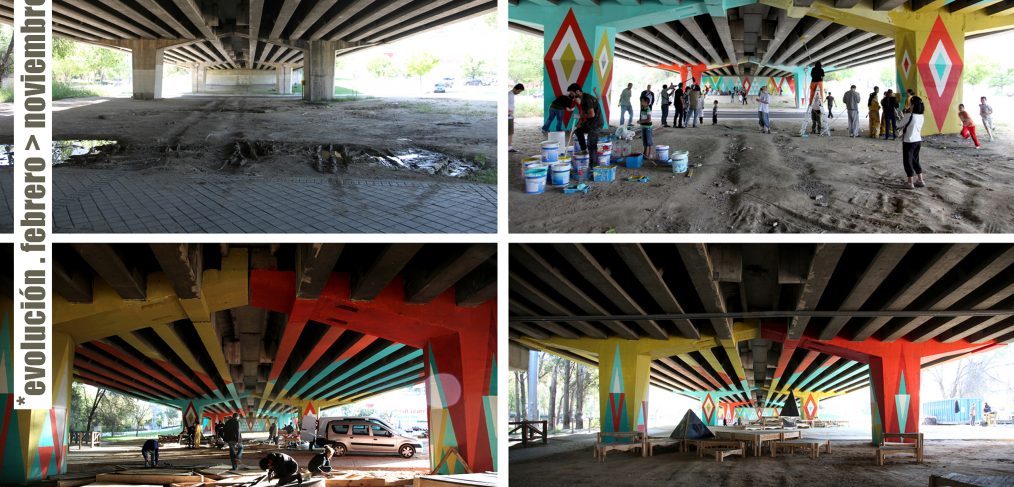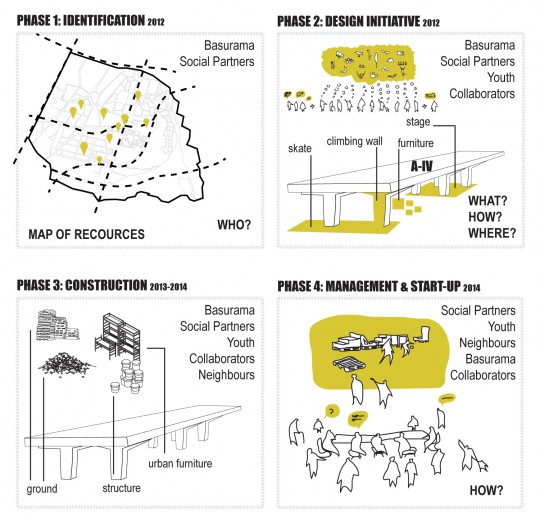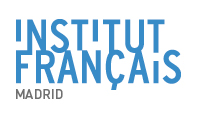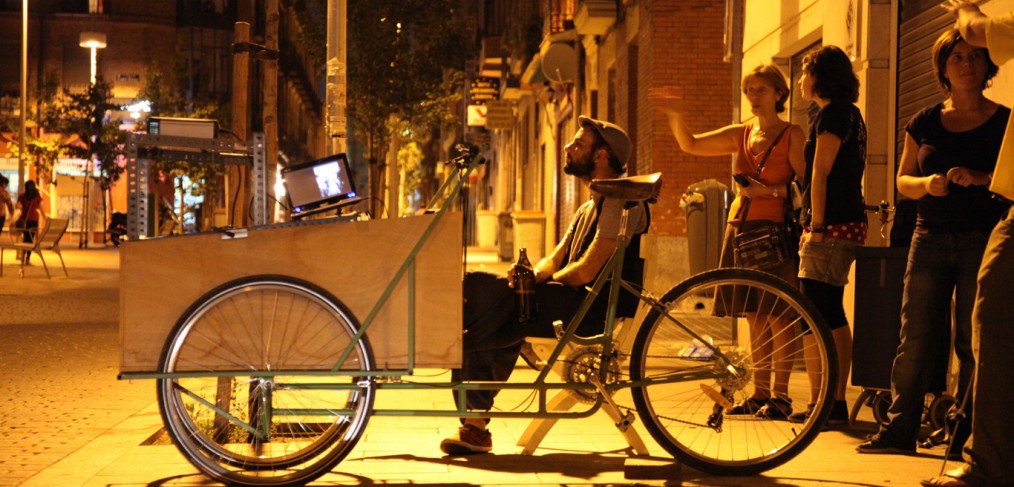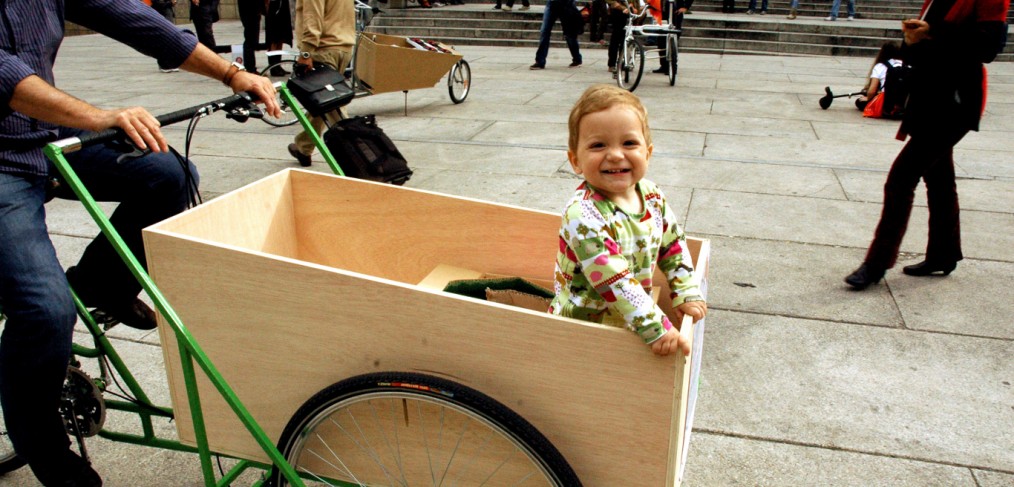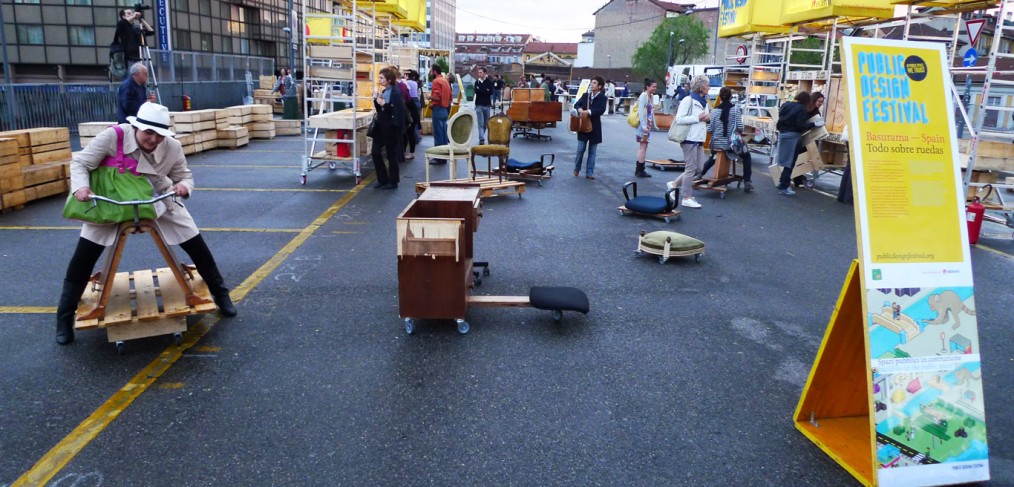Summary
M-30 works: The stage is unique, unexplainable and majetic. It deserves an in-depth recognition. The pharaonic idea of chaging a city almost completely constitutes a good portrait of the current urban policies. The progress of the works, more and more catastrofic, expensive and pharaonic, as open wounds in the land, deserve to be documented before they are forgotten. However, is not only about critizing the proper works as well as focusing on the reform of M-30. When the project to be carried out has sense the works are unavoidable and a lesser evil, but the project in which we are on is probably the most representative example of a stake in the use of private vehicles in Madrid.
Due to these reasons, the only method we found to approach the nonsense of the most popular ring road of the city, like characters of aFellini movie in an apocalyptic movie set, areaciega andBasurama organized a visit in a turistic cabriolet bus around the M-30 works. We got on it with many other people that wanted to check out the great black hole of the mayor Gallardón, looking for that treasure, candy of the big construction companies of the country. From a height of 4 meters, looking over the fence, the works showed as its maximus splendor.
The objective was not other than to make people think with a performatic and carnival-like attitude regarding a surrealist project (it´s not obvious that the reasons behind the project are purely urbanistic or in the interest of the citizens). And of course, to get ahead of the FUTURE and to be the first tourist that visit which in a few years will be the most visited touristic attraction of Europe. Among such peculiar tourists were famous scholars, local activist, environmental engineers, architects aware of the project of the park (the green mat) that will cover the tunnels, a representative from the political party Izquierda Unida that accompained the MEPs when they came to evaluate the project, as well as many other people from multiple fields, plus two musicians that entertained playing live jazz.
The tour started at the entrance of the south by-passin Méndez Álvaro street, and finished in Plaza Castilla, including the towers over Ciudad Deportiva of Real Madrid as an exclusive view courtesy of our travel agency. The tour highlighted the most hardest hit area, between Puente de Praga and Puente de Segovia, authentic battlegrounds. Along the tour were mentioned the construction companies that won the public bids to carry out the works, as well as the theoretical cost of their contracts. When the bus got closer, the workers happily gret the tourists, which celebrated overjoyed the reception offered by the inhabitants of the works, which were denominated by José Luis Córdoba as an “system with a life of its own”. Like in every great tour, the hostess signalled to the tourists the best places to take pictures as souvenirs and there was a stop to buy typical products.
The touristic trip to the M30 works in Madrid took place on September, 17th of 2006 in a cabriolet double-decker bus M-30 and organized byareaciega and Basurama. Production by SauroPixels.
A preview was made in 2006 in Ladinamo. The 2.0 version was released on internet on January, 22nd of 2007.
Many years later, we wrote a text about M-30 that can be read in the text section.
Aditional information.
The following links give additional information about M-30 thatBasuramaAreaciega have used:
- Basura panorámica,contains information about the M-30 in the Basurama´s exhibtion of 2006. Actualized content in the article of 6000km project.
- Áreaciegareflections about M-30.
- Pictures of the trip
- Trailers
Other related links
A list of links related to the topic.
- Video of Gallardón visiting the tunnels of M-30(elmundo.es) with the engineer Manolo Melis.
- comwhere the aereal pictures of the original M-30 can be compared with (YahooMaps) the M-30 current ones (Google Maps).
- Plataforma M-30del Foro por la Movilidad sostenible de Madrid many other people before us, have documented in greater depth the problems of the works, such as the platform M30 No más coches (cars no more).
- The project in the webpage of Madrid City Council munimadrid.es.
- Article by Ramón López de Lucio: M-30 reform: ¿What is the green ideology hiding?.
- In the following webpage all kind of details abou procedures, budgets and other technical details about “La locura de la M-30” (“The Madness of M-30” can be found carreteros.org.

